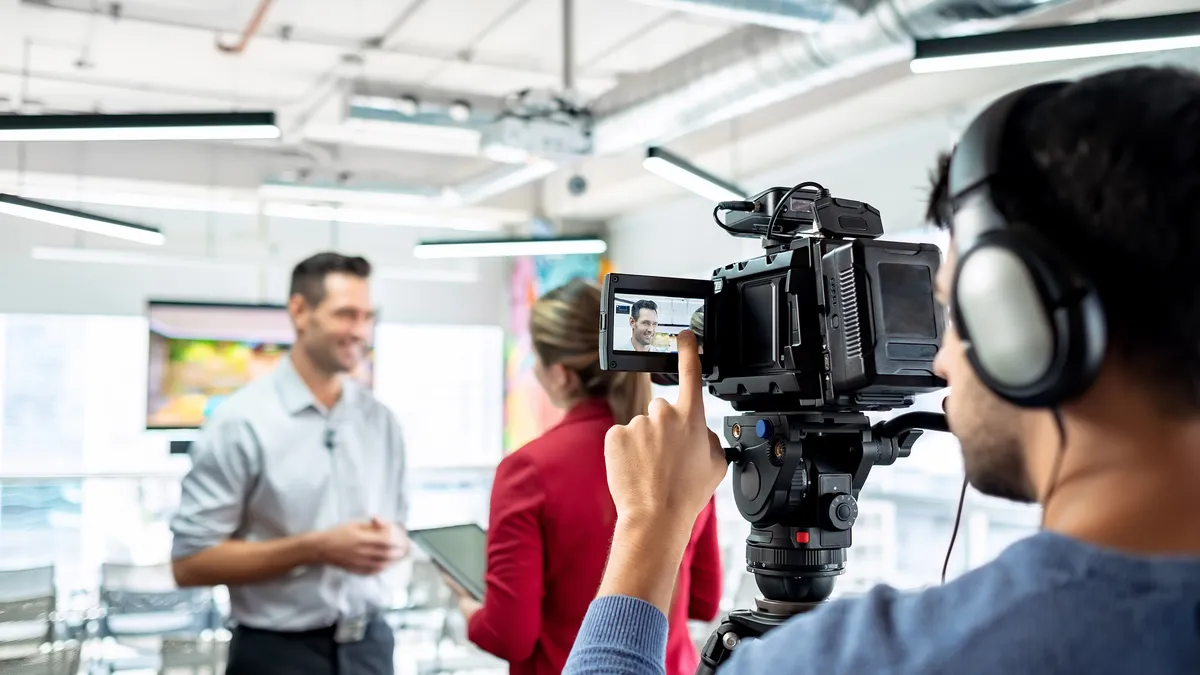Similar to hosting an in-person event, hosting a successful virtual event is a major undertaking that requires ample planning and follow through. According to data analyzed by Markletic, when it comes to hosting small virtual events, most marketers require between three and six weeks to promote the event successfully.
The payoff of this work can be substantial—68% of marketers report that virtual events help them generate leads, according to a report sponsored by Content4Demand, Integrate, and Selling Simplified.
To get the most return on the time and money invested into virtual events, let’s take a closer look at why virtual events matter for marketers, how they can host them, and what the lifestyle of a successful virtual event looks like.
The significance of virtual events in 2022
A virtual event can take on many shapes and forms, but essentially a virtual event is one that brings multiple people together digitally.
Virtual events have been helping marketers meet their goals since long before the pandemic halted the possibility of having in-person events. Understandably though, this change did force marketers to lean more heavily on virtual events.
Zachary Bosin, Vice President of Product Marketing at BlueJeans, reflected back on this shift.
“If we rewind the clock to pre-March 2020, marketers were experimenting with webinars and virtual events, but there was still a pretty significant investment in physical events,” Bosin explained, “The pandemic forced, almost overnight, this incredible transformation where you had to create something that was more digital.”
Even though in-person events are returning, the convenience, affordability, and reach of virtual events are keeping them top of mind, making them a popular choice for marketers looking to scale events.
Different types of virtual events
Are you unsure of how you can utilize a virtual event to meet your marketing goals? Let’s look at a few examples of what different virtual events can look like.
- Marketing webinars. You can present and record captivating webinars that spark excitement and expand mind-share to a large amount of virtual attendees. It’s also possible to record webinars and to allow people to view them at a date and time of their choosing.
- Company events and all hands meetings. You can make an impact at your next company event no matter where your employees work from with branded and engaging experiences for employees. Electrolux, Dolby, and Red Hat have all found success hosting virtual company events in recent years.
- Product launches and demos. Show off your latest offerings by digitally announcing new products, increasing brand recognition, and streaming to millions worldwide.
- Broadcast interviews. You can host professional and intriguing Q&A conversations that tackle topics your audience has an interest in.
- Hybrid events. Stream any live event virtually using simple broadcasting controls without having to purchase any special equipment.
There is unlimited potential when it comes to the types of virtual events your company can host and for what purpose they’ll serve, but you can see how these events can take on many different forms.
The 3 stages of a successful virtual event
When it comes to the lifecycle of a successful virtual event there are three distinct stages that marketers need to pay equal care and attention to.
Pre-event planning
The pre-event planning stages (which includes pre-production, lead generation, signing up attendees, and determining the event’s format and reach) front load a lot of the work that comes with developing an effective virtual event. Bosin recommends identifying your desired outcomes first. He advises asking yourself what you’re trying to accomplish with your virtual event.
A few potential outcomes may be:
- Launching a new product
- Driving thought leadership
- Kicking off a marketing campaign
“Ultimately understanding that outcome and then thinking about who is best able to deliver that message on our behalf serves as a lightning rod to drive attendee participation,” Bosin said.
Engagement during the event
Speaking of engagement—Bosin explained that with virtual events you’re quite often trying to replicate an onsite experience. Whenever possible, it’s helpful to use digital features that allow people to engage similarly to how they would at an in-person event by giving them the option to raise their hand, ask questions, and engage with other event attendees and the presenters.
Planning high quality content is the first step towards hosting a virtual event that people want to engage in, but it’s also important to not simply hand over the event to a host and exclude the audience from shaping the event.
“Handing it over to somebody and letting them speak for 45 minutes and maybe doing a Q&A at the end isn’t going to cut it in terms of what’s going to drive engagement.”
Alongside strong broadcast quality, BlueJeans offers high-tech features designed to encourage engagement during virtual events like:
- Interactive polls
- Chat section
- The ability to show comments on the screen
- Hand raising
- Q&A capabilities
- Virtual backgrounds
“You want to use all of the tools in your tool belt, whether that is polling, a Q&A, chat, or different mechanisms for engagement,” Bosin noted, “One of the new features that we're introducing, allows you to take some of the top questions that get asked and flash them on the screen.”
Post-event activities
Again—hosting a virtual event is a major investment and you don’t want to let that investment go to waste. What you do after an event matters just as much as what you do before and during a virtual event.
“You put so much time and energy into the planning and then it's the day of the event and you crush it with great conversation and dialogue engagement…you don't want [those efforts] to be ephemeral,” Bosin shared, “You don't want that one experience to only be available to the folks that attended for that 30 minutes.”
So how can you make the most of your virtual event after it’s already over? Bosin recommends capitalizing on the best parts of the conversation. The great thing about virtual events is they are digital and you can record them. This gives you the opportunity to make snackable pieces of content that can live in perpetuity.
“Whether you do this through creating social programs, planning an email cadence for follow up from the event, or by packaging up some of the content discussion into an eBook—there's so many different ways that you can repurpose that great content. And if you've done your job and you've got the right content and the right speakers, that's where the magic really happens.”
Key takeaways
Hosting a successful virtual event involves working your way backwards from your desired planning outcomes and planning for all three stages of the event lifecycle—pre-event planning, engagement during the event, and post-event activities.










